Three and a half programs for backup
This year, residents of the Internet and other PC owners have a new holiday - World Backups Day.
Founded this holiday one of the users of the site reddit. His idea was quickly picked up by users and some large companies, including WD. The official holiday website is worldbackupday.com, which tells about all sorts of ways to back up information.
If we discard completely old-school methods like copying to CD and DVD discs, the most common are backups manually, backed up using software bundled with external drives, and special stand-alone backup software. In my bins there were three external hard drives from different manufacturers, and it was their software for backup that I decided to compare.
The first is WD My Passport with a capacity of 500 GB:

The second is iomega eGo Drive, also 500GB:

Third - HP Portable Hard Drive, 500GB:
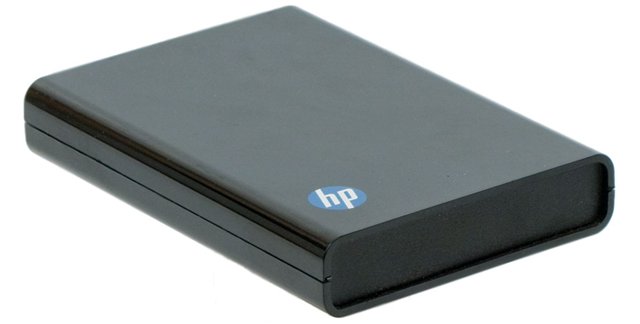
')
Most of all I liked the WD product for its small size and the absence of sharp corners (which is especially useful when trying to fit the immense backpack). HP has the lightest portable drive, and iomega will be appreciated by girls for its stylish look. The interface for portable drives WD and HP USB 3.0, for iomega - USB 2.0.
The first to test was the native WD backup program called WD SmartWare, bundled with the device. The interface is simple and clear: on the left is the user's PC with the disk selection menu, on the right is the portable hard disks to which data will be written. The program is completely localized, which is an additional advantage.

As you can see, the developers decided not to go the traditional way, offering the user to select directories with important data, but broke all the information stored on the disk by type: pictures, music, documents, video, and more. This approach immediately gives an orientation to a simple user, who is just such familiar categories and thinks - here I have the music, here are the photos, and in the windows folder there are a bunch of unintelligible files. WD SmartWare works correctly with several drives of the same type and does not confuse them, which is important when actively using the same external hard drives.
On the Backup tab, you can select a local disk from which backup will be made, and select files for backup.
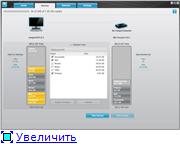
The backup process is reflected by the striped progress bar in the upper left corner of the program window and the color filling of the rectangles indicating the type of data:
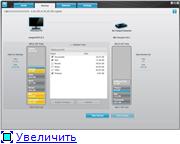
When the drive is reconnected, SmartWare will scan the disk for changed files and save the updates to a portable drive.
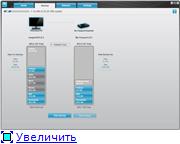
To recover data, go to the Retrieve tab:

Here you can choose the method of recovery: return all zabkaplennye files to the "original position" or put them in a separate folder.
All backup files are stored on WD My Passport in a folder named after the PC's network name, with the entire directory tree saved. This makes it possible to use the same disk to create backups from different systems, without fear of losing previously saved data, and in the absence of the program to recover lost files.
The second exhibit was the “native” backup software from iomega - Quick Protect. The interface is immediately visible - the program is designed for advanced users.

The What tab allows you to mark directories and / or disks, information from which will be saved to a portable drive.
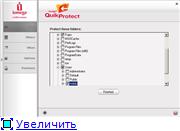
The Where tab allows you to select a drive for saving data. QuickProtect allows you to use other drives, including network. The When tab is used to set the frequency of data backup ...
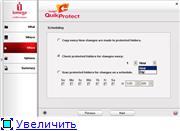
... And on the options tab, you can specify the number of revisions of modified files that the program will save.
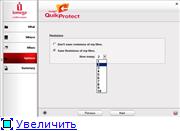
QuickProtect activity can be traced by a pop-up window near the clock, in the lower right corner of the screen.

As you can see, the clever utility works according to the “once set up and forget” principle. Not bad.
Then the native HP utility should have gone, but, unfortunately, it completely refused to work with the native disk. There was no wish to arrange “dances with a tambourine” in order to find out the reasons for such a whim. Therefore, its place was taken by the first backup program that fell when searching on Google. She became Cobian Backup.
The structure of the main window is in many ways similar to QuickProtect, and there are more options. First, it is proposed to specify a method for backing up data and a type of backup.

The second tab is the simplest - it creates a list of directories and / or disks for which you need to create a backup:
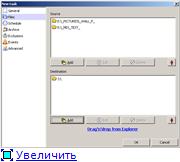
On the third tab is set the frequency of backup. You can even set a specific time at which Cobian Backup will be activated and backup modified files.
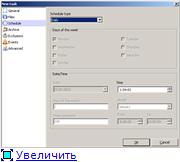
On the Archive tab, you can activate backup archiving and encryption:
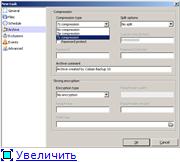
And the backup process itself is reflected by two progress bars and a log in the main window of the program.
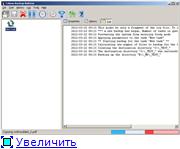
Conclusion: in order to fully use Cobian Backup, you need to know at least the basic things about the file system device.
Of the three tested free data backup utilities, I liked WD SmartWare the most. It is extremely easy to use, does not load the brain with additional options, is predictable and works without glitches.
And Cobian Backup and QuickProtect can be advised to advanced users who want to control the backup process from “A” to “Z” and have enough time and desire to set up the program.
Founded this holiday one of the users of the site reddit. His idea was quickly picked up by users and some large companies, including WD. The official holiday website is worldbackupday.com, which tells about all sorts of ways to back up information.
If we discard completely old-school methods like copying to CD and DVD discs, the most common are backups manually, backed up using software bundled with external drives, and special stand-alone backup software. In my bins there were three external hard drives from different manufacturers, and it was their software for backup that I decided to compare.
The first is WD My Passport with a capacity of 500 GB:

The second is iomega eGo Drive, also 500GB:

Third - HP Portable Hard Drive, 500GB:

')
Most of all I liked the WD product for its small size and the absence of sharp corners (which is especially useful when trying to fit the immense backpack). HP has the lightest portable drive, and iomega will be appreciated by girls for its stylish look. The interface for portable drives WD and HP USB 3.0, for iomega - USB 2.0.
The first to test was the native WD backup program called WD SmartWare, bundled with the device. The interface is simple and clear: on the left is the user's PC with the disk selection menu, on the right is the portable hard disks to which data will be written. The program is completely localized, which is an additional advantage.

As you can see, the developers decided not to go the traditional way, offering the user to select directories with important data, but broke all the information stored on the disk by type: pictures, music, documents, video, and more. This approach immediately gives an orientation to a simple user, who is just such familiar categories and thinks - here I have the music, here are the photos, and in the windows folder there are a bunch of unintelligible files. WD SmartWare works correctly with several drives of the same type and does not confuse them, which is important when actively using the same external hard drives.
On the Backup tab, you can select a local disk from which backup will be made, and select files for backup.

The backup process is reflected by the striped progress bar in the upper left corner of the program window and the color filling of the rectangles indicating the type of data:

When the drive is reconnected, SmartWare will scan the disk for changed files and save the updates to a portable drive.

To recover data, go to the Retrieve tab:

Here you can choose the method of recovery: return all zabkaplennye files to the "original position" or put them in a separate folder.
All backup files are stored on WD My Passport in a folder named after the PC's network name, with the entire directory tree saved. This makes it possible to use the same disk to create backups from different systems, without fear of losing previously saved data, and in the absence of the program to recover lost files.
The second exhibit was the “native” backup software from iomega - Quick Protect. The interface is immediately visible - the program is designed for advanced users.

The What tab allows you to mark directories and / or disks, information from which will be saved to a portable drive.

The Where tab allows you to select a drive for saving data. QuickProtect allows you to use other drives, including network. The When tab is used to set the frequency of data backup ...

... And on the options tab, you can specify the number of revisions of modified files that the program will save.

QuickProtect activity can be traced by a pop-up window near the clock, in the lower right corner of the screen.

As you can see, the clever utility works according to the “once set up and forget” principle. Not bad.
Then the native HP utility should have gone, but, unfortunately, it completely refused to work with the native disk. There was no wish to arrange “dances with a tambourine” in order to find out the reasons for such a whim. Therefore, its place was taken by the first backup program that fell when searching on Google. She became Cobian Backup.
The structure of the main window is in many ways similar to QuickProtect, and there are more options. First, it is proposed to specify a method for backing up data and a type of backup.

The second tab is the simplest - it creates a list of directories and / or disks for which you need to create a backup:

On the third tab is set the frequency of backup. You can even set a specific time at which Cobian Backup will be activated and backup modified files.

On the Archive tab, you can activate backup archiving and encryption:

And the backup process itself is reflected by two progress bars and a log in the main window of the program.

Conclusion: in order to fully use Cobian Backup, you need to know at least the basic things about the file system device.
Of the three tested free data backup utilities, I liked WD SmartWare the most. It is extremely easy to use, does not load the brain with additional options, is predictable and works without glitches.
And Cobian Backup and QuickProtect can be advised to advanced users who want to control the backup process from “A” to “Z” and have enough time and desire to set up the program.
Source: https://habr.com/ru/post/141141/
All Articles